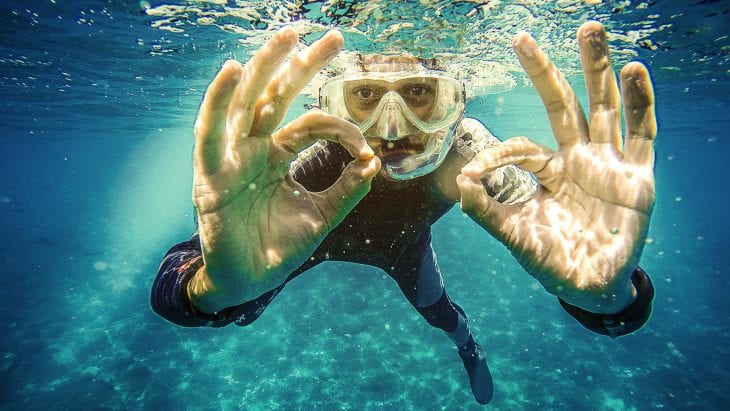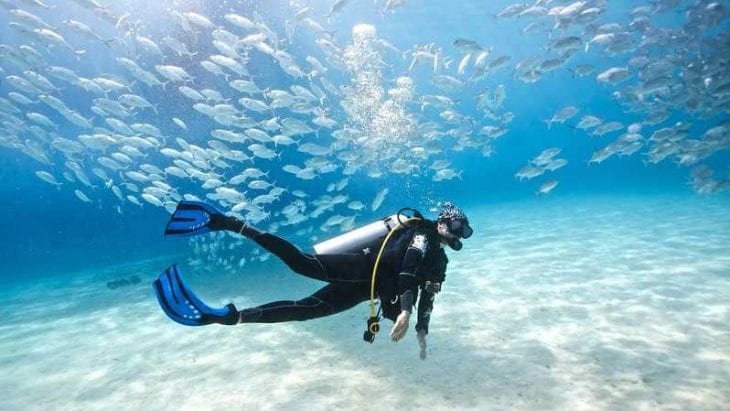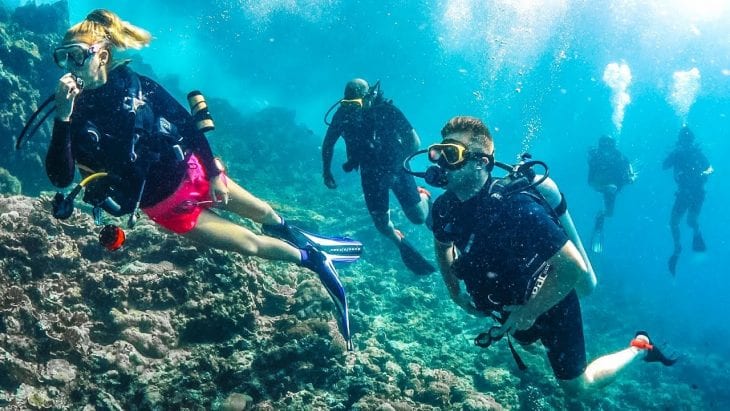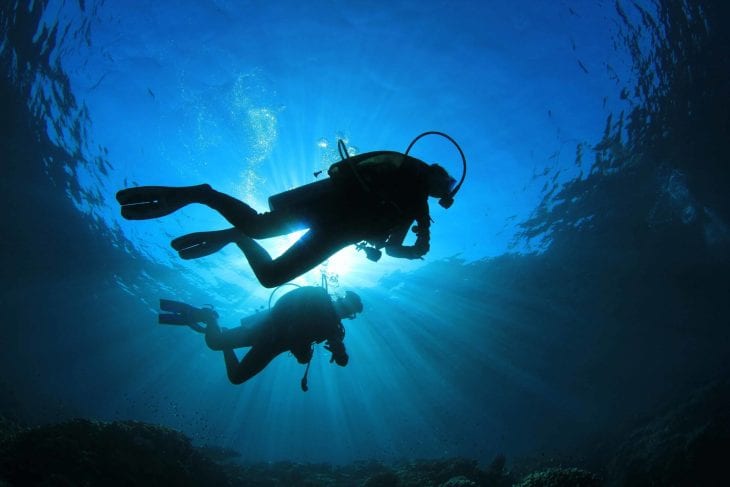– Did you ever dream about scuba diving in the deep water of the Great Barrier Reef? Just imagine sinking down into the warm and blue water, exploring coral gardens and seeing this wondrous world through the eyes of fish. Learning to dive is easy and is your ticket to a new world. Here are some things that you might be wondering about.

Source: Mpora
- Can you scuba dive? – most people who know how to swim, also can scuba dive. However, there are some health conditions which will prevent you from diving, like heart and lung problems, asthma, diabetes, and pregnancy. You will, of course, need to complete a dive medical, prior to diving almost anywhere in the world, and you usually need to be 12 years or over in order to learn how to dive, There laws were put in place to make sure that you will be safe in the waters.
- Is scuba diving hard? – Actually, scuba diving is not at all hard. In fact, it is one of the most graceful things you could do. There is no gravity and land in the waters, you literally just dive into the deep blue. You are weightless. While descending to explore a destination full of amazing marine creatures and corals, you will feel like you are no longer on Earth.
- How long does a course take? – Open Water Dive Courses usually last 4-5 days to complete, including two days of classroom theory. If you choose, you can complete the theory part online, ahead of time. All learn to dive courses include training dives, that are required to complete your certification and you will most certainly get some fun dives with your instructor.

Source: Scuba Diving
Scuba diving gear
– Technical diving includes diving beyond normal recreational scuba diving limits. And here is a list of gear you will need in order to dive:
- Primary mask and backup mask – although any scuba mask is good, tec divers prefer compact masks for minimum resistance in the water. A backup mask is carried in a pocket, in case of loss or damage to a primary mask. If you want to see a list of top 13 scuba diving masks for 2019 you will be getting info about all the most popular choices in this category.
- Fins – technical divers often use dry suits, that require a large style, open-heel adjustable fins.
- Wing-typed BCD and harness – a high capacity BCD (buoyancy control device), with a backup gas bladder mounted between the harness and cylinder is necessary. The backup bladder is needed, because a diver may be too heavy to swim to the surface if the primary BCD fails. The harness is a shoulder, waist, and crotch strap that holds the tank to the diver’s back.
- Primary and secondary regulator – the primary regulator has a two-meter hose for sharing gas with a teammate in cases of emergency. The secondary one is independent for use in case of malfunctioning in the primary regulator.

Source: scuba-kohchang.com
- Dry suit – it will most certainly provide a comfortable dive over a long duration of time.
- Twin cylinders, decompression cylinders – high capacity cylinders hold high-pressure compressed air. A decompression cylinder and regulator is clipped to a harness on the side. Extra tanks are used to extend the dive time and or carry gas for optimizing decompression.
- Multigas dive computers and submersible pressure gauge (SPG) – dive computers, one primary and one secondary, track and display decompression requirements and allow drivers to switch to different kinds of gas blends in order to optimize decompression. If not integrated into the dive computers, SPG constantly displays how much air remains in the cylinders.

Source: Girls that Scuba
Conclusion
– As Jacques-Yves Cousteau once said, „the sea, once it casts its spell, holds one in its net of wonder forever“. And, I have to say that most divers, including me, absolutely agree with this. You will not regret it and you may end up with a wonderful new hobby.
